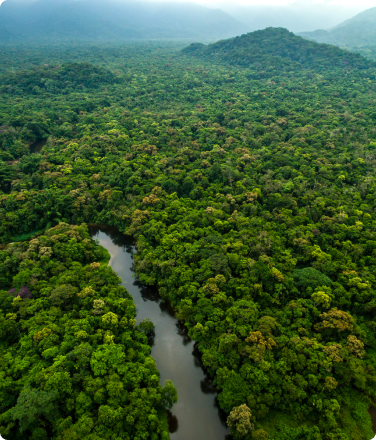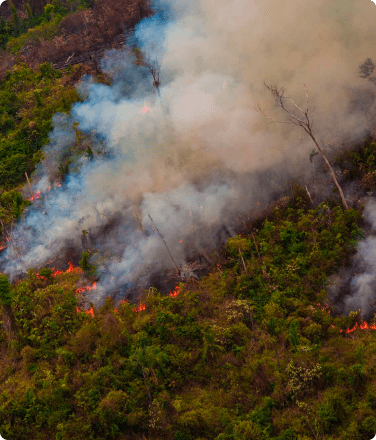- Fires and extreme drought ravaged the Amazon rainforest in 2024. A staggering 44.2 million acres of Brazil’s Amazon went up in flames, a steep rise from the previous year.
- Reducing deforestation, strengthening fire brigades, and expanding the land rights of Indigenous peoples are effective ways to prevent and mitigate fires.
In 2024, fires devastated the Brazilian Amazon at an unprecedented scale. More than 44.2 million acres of rainforest burned, an area larger than the entire state of California. Across the region, unprecedented drought conditions, rising global temperatures, and destructive land-use practices pushed the forest closer to an irreversible tipping point.
According to MapBiomas’ Fire Monitor, the area burned in the Brazilian Amazon in 2024 increased by at least 66% compared to the previous year, reaching a peak in September when 13.7 million acres went up in flames, an area roughly the size of Costa Rica. The number of fire outbreaks also surged by 42.3% compared to 2023. Data from INPE, Brazil’s National Institute for Space Research, recorded 140,346 outbreaks in 2024, up from 98,639 the year before, though still below the all-time record of 218,637 set in 2004.
The crisis extended beyond Brazil. Bolivia registered 90,026 fire outbreaks in 2024, the highest number ever recorded since INPE began collecting data in 1998. Neighboring countries, including Venezuela, Colombia, Peru, Ecuador, and Guyana, also faced a surge in fire activity, underscoring the scale of the disaster across the entire Amazon Basin.
Scientists warn that if this trend continues, the Amazon could reach a “tipping point” by 2050, shifting from a carbon sink to a source, with devastating consequences for the global climate.
For the first time on record, fires were the leading cause of forest loss in the Amazon
In 2024, months of record-breaking heat and extreme drought created the ideal conditions for uncontrollable blazes to reach deep into protected and primary forests. Fires, often intentionally set to clear land for cattle, agriculture, and mining, spread far more aggressively than in normal years when wetter conditions usually kept them contained.
According to data from the World Resources Institute, fires accounted for almost 70% of forest loss in the Brazilian Amazon—making them the leading cause of primary forest destruction for the first time on record. Several factors contributed to this massive increase in fires. The region experienced unusually dry conditions, closely linked to climate change and intensified by El Niño. In fact, 2024 was the hottest year ever recorded on Earth. By June, the planet had gone through 13 consecutive months of record-breaking temperatures, leaving the Amazon more vulnerable than ever. Last year, the region also faced a historic drought for the second year in a row, fueling fires that spread through native vegetation.
Reducing deforestation and strengthening Indigenous and local fire brigades have already proven effective in preventing and mitigating fire damage. Yet with the rainforest still vulnerable to prolonged drought and a tipping point looming, these efforts must be reinforced through stronger, more systematic state action. We urgently need accountability, rapid emergency response, aerial fire suppression, and harsher penalties to meet the crisis.
Learn more about Indigenous-led rainforest protection and keep up with the latest developments in our work by signing up for our email list today.



